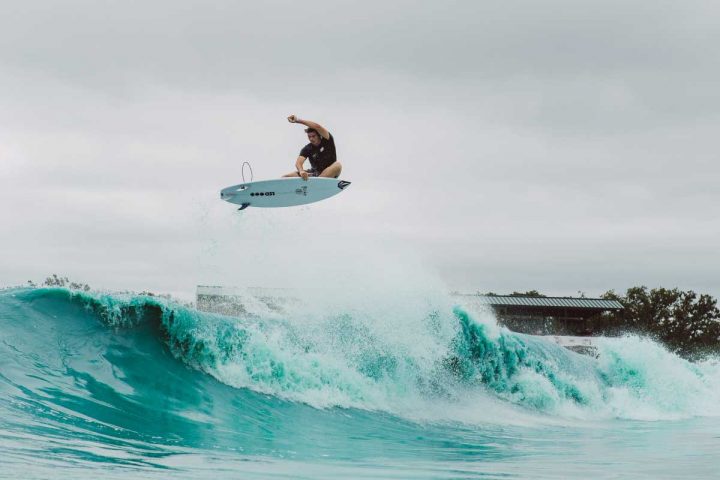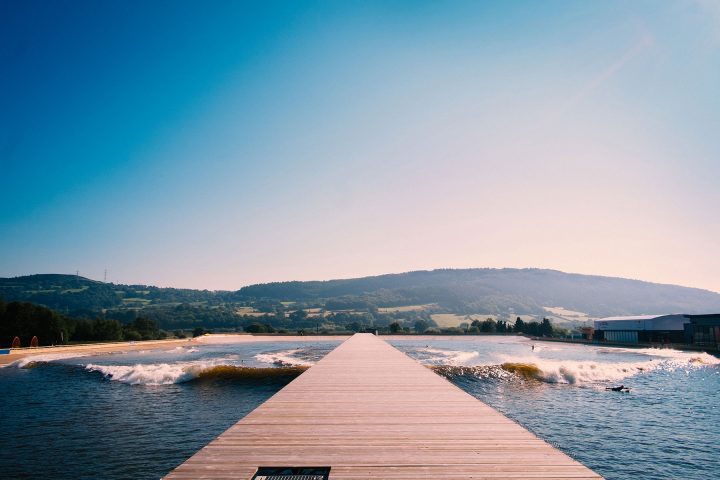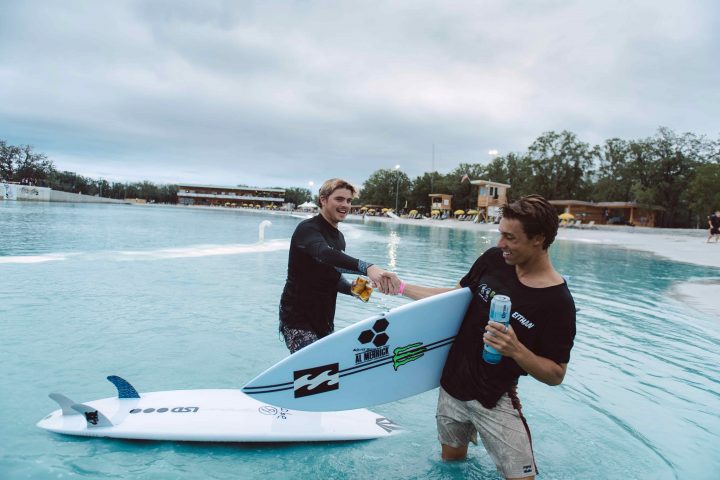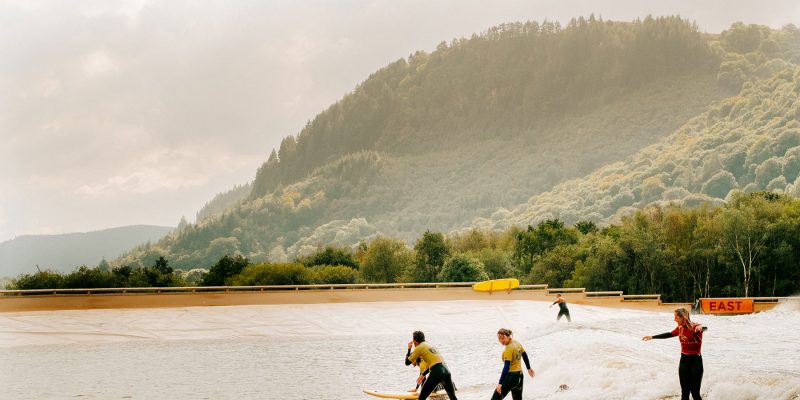Courtesy of man-made artificial pools, surfers can now ride waves at landlocked destinations, but is this at the expense of our environment?
Surfing the internet, you come across another video featuring plans for wave pool technology. Newcomers Surf Lakes in Australia just released footage of their concept with five different waves rolling in different directions at the same time.
Longing for your next good session, the pool gets your mind surf senses tingling.
Amongst internet comment sections for wave pool videos, there is a mixture of responses, some frothing about the potential of a surf park being built in their area and others (purists) arguing pools take the soul out of surfing.
The development of artificial wave pools is not alien to surfers. We conducted a survey to gain surfers opinions on the new phenomenon and found that everyone who took part knew of the concept. Although few have had the opportunity to ride one, all respondents said they would like the chance to surf in a pool.
But how many of you are aware of the deeper environmental risks that these new in-land playgrounds present?
Jess Ponting is a director of surf research at San Diego State University and a leading academic in sustainable surf tourism. He is at the heart of the wave pool game, working with figures in the industry to ensure environmental sustainability is a priority.
“The wave pool industry needs to be a showcase of sustainability best practises otherwise it’s just part of the global problem that is destroying surf breaks in nature. To ensure wave pools are more environmentally friendly, they must be prioritising sustainability every single step of the way.”
Jess identified water and power as the key environmental areas which need to be addressed when taking into consideration the planning, site selection and execution of a surf park.
Quality and source of water
A surfer recently died from a brain eating disease at the Waco wave pool in Texas. It was originally thought the disease was in the water but an official report published by the Waco-McLennan County Public Health District detected it at the park site rather than the water.

Jess felt that regardless of the report’s outcome, it is crucial that companies put the safety of their users as a number one priority and in terms of water quality, they must use an adequate filtration and treatment system.
“In places where there may be regulatory loopholes when it comes to water quality, surf park developers must prioritise the health and lives of their patrons. In the vast majority of cases, local regulation will ensure that surf pools meet levels of filtration that are safe.”
Jess advices people not to use the pool if they have concerns over the quality of the water.
“I would certainly ensure the water was clean, filtered and treated sufficiently before letting my daughters surf in any park. Ask about the filtration and treatment used and if there isn’t any, don’t go in.”
It is not just about how the water is treated, Jess believes we need to understand where the water is sourced from, as this can be an issue in scarce areas, but did identify potential solutions for this.
“Surf Snowdonia in Wales uses water diverted from the hydro-electric power station next door. A surf park in pre-development stages in the US will use treated and recycled sewer water.”

Use of energy and power
Each time a wave is pumped out by the machinery, it uses a lot of energy. The technology pollutes the surrounding atmosphere with CO2. Jess has stressed to any company involved in the wave pool game that to work towards sustainability they must lower their carbon footprint.
“Some of the technologies use huge amounts of power to generate waves. However, if renewable energy sources are used and CO2 emissions are effectively offset, surf parks can be carbon neutral or even negative. For example, the WSL surf ranch in California pays a premium to have its grid power come from solar power generation.”
As well as CO2 offset by running the wave. Building these big sites will pollute the surrounding air. Each park features more than just the pool. Surf Snowdonia in Wales features a large spectator area and overnight huts which can be rented out for the night.
Jess highlighted that although it is only natural for an increase in waste and noise pollution during construction, it is important this is kept to a minimum in order to preserve the surrounding areas.
What are the solutions?
Although there are no short-term solutions to potential problems. Jess has been taking steps towards sustainability since 2013.
“I co-founded the Surf Park Summit series of conferences in 2013 and now run a sustainability certification business called STOKE certified which provides sustainability certifications for surf and snow resorts, destinations and events.”
STOKE are currently developing a sustainability standard for surf parks which will help their development remain environmentally friendly throughout.
As the number of surf parks increases in land locked areas, communities of pool only surfers will emerge as those who have never had the chance to taste the salty open ocean air, get their release of wave riding via the artificial.

Jess hopes a new sub culture of landlocked surfers can become ocean activists regardless of the fact they may never experience the sea.
“The rise of artificial surf technology can be a catalyst for a generation of surfers who care about the current threats to our marine environment. They can act as gatekeepers, passing their knowledge onto others and educating those who are currently unaware of our oceans and the threats being posed to them.”
If the artificial is taking over from the natural, this could lead to surfing breaking its close ties to the environment. Whether you are a surfer, non-surfer, ocean surfer or pool surfer, would you now be thinking twice before choosing to ride the artificial wave?


